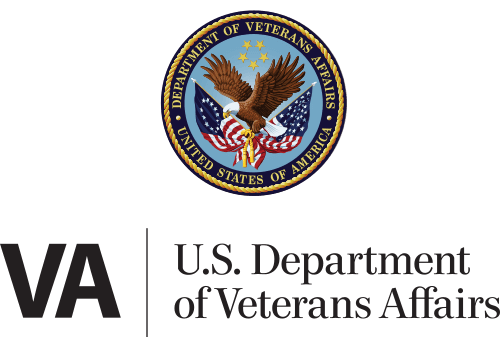House Committee on Veterans Affairs Holds Hearing: “VA 2030: A Vision for the Future of VA”

CCK Law: Our Vital Role in Veterans Law
On February 27, 2019, the United States House of Representatives, Full Committee on Veterans’ Affairs held a hearing: “VA 2030: A Vision for the Future of VA”. Generally speaking, the committee is responsible for recommending (1) the expansion or curtailing of legislation, and (2) the fine-tuning of existing laws, relating to veterans’ benefits. The committee also has the authority to monitor and evaluate the operations of VA. If the committee finds that VA is not administering laws as Congress intended, then it is addressed through the hearing process and legislation. Wednesday’s hearing was focused on laying the groundwork for a long-term vision for the future of VA.
Opening Statements from Chairman, Ranking Member, and Secretary
Mark Takano, Chairman of the Committee
Chairman of the committee Mark Takano expressed that the ideal vision for the future of VA is twofold. Specifically, by 2030, VA will be an easy to navigate system that facilitates participation and increases satisfaction. Additionally, VA will have caught up to the changing demographics of veterans. To do so, VA must currently evaluate its programs and services to determine how they can better serve minority groups, including women, the LGBTQ community, and people of color.
Phil Roe, Ranking Member of the Committee
Ranking member Phil Roe expanded on this vision by addressing the major changes to all VA processes that have occurred recently. He indicated that the focus for the future remains on how those major initiatives are being implemented and how VA is preparing for the revolution they represent. The present enactment of such changes is setting the stage for what VA will look like and become in the future. Roe also reiterated that the veteran population will look markedly different in 2030, to include fewer veterans overall, but more women and racial minorities. He stated that those demographic changes need to be addressed now in order to be adequately prepared for the future.
Robert Wilkie, Secretary of VA
In his opening remarks, Secretary Wilkie stated that VA is currently in the middle of the most profound transformation in the history of the department. He highlighted VA’s commitment to providing veterans with choice and availability, and serving all those who served in uniform, throughout the years to come. According to Wilkie, VA’s vision for the future involves the department changing the way it treats veterans and creating a modern, 21st century healthcare system.
Members of the Committee Participate in Q&A Session
After the opening remarks, members of the committee were given the opportunity to participate in a question and answer session with the Secretary of VA, Robert Wilkie, and the Executive in Charge of the Veterans Health Administration (VHA), Dr. Richard Stone. These questions covered a wide range of topics, including the following:
Benefits for Blue Water Navy Veterans
On January 29, 2019, the Federal Circuit issued a decision in Procopio v. Wilkie. In its decision, the Federal Circuit overruled Haas v. Peake, which previously excluded Blue Water Navy veterans from the presumption of exposure to herbicides during the Vietnam War. If this decision stands, thousands of Blue Water Navy veterans will now be afforded the same presumption of exposure to herbicides as veterans who served “boots on the ground” in Vietnam. As a result, these Blue Water Navy veterans will have an easier path to getting the benefits to which they are rightfully entitled. VA is currently within the 90-day time frame to appeal the decision. During the hearing, Secretary Wilkie indicated that he has not made any recommendations for VA to appeal this decision and he does not intend to. Furthermore, he stated that if the decision stands, VA is ready to meet the dictates of that decision and have discussions on how to expand resources and provide benefits for the population that is affected. Secretary Wilkie also recognized that in doing so, VA will likely have to look at all of those who are impacted by the decision, to include veterans’ families and estates. Ultimately, he maintained that VA is ready to do so.
Benefits for Purple Heart Recipients
Members of the committee briefly asked about Secretary Wilkie’s recent announcement that he plans to prioritize veterans who have Purple Hearts when it comes to receiving VA disability benefits. Secretary Wilkie responded that VA intends to use the DD Form 214, Certificate of Release or Discharge from Active Duty, to make determinations of Purple Heart recipients. He also noted that in the case of veterans whose records were destroyed in the 1973 fire, VA will do everything it can with the support of Veterans Service Organizations and the Department of Defense (DoD) to go back and make sure those veterans are “made whole.” Implementation of this prioritization is scheduled to start in the next few months. VA is also working to make sure that those who are leaving service with a Purple Heart are made aware of the new regulations that will prioritize their claims for benefits. In an effort to do so, this information is now being included in the service members’ transition packets, which they receive upon separation.
Women Veterans
As noted throughout the opening statements, one of VA’s main concentrations moving forward is to better serve the growing number of minority groups within the veteran population. Many questions from committee members addressed this issue further. Secretary Wilkie noted that women make up 17 percent of the current active force, and that is anticipated to increase to 20 percent by 2025. In regards to the veteran population, women now comprise 10 percent of it. Therefore, there is increasing importance to make VA’s programs more accessible and beneficial to women moving forward. VA has recently implemented a women veterans task force that is responsible for examining both the services and programs specific to women veterans, and all programs in general, to determine how they can better serve women. The women veterans task force will also address the known barriers to women accessing benefits and implement strategies to overcome them.
Recruiting and Retaining VA Healthcare Employees
Throughout the question and answer segment, committee members addressed the department’s current, ongoing issues with recruiting and retaining VA healthcare employees. Specifically, committee members asked Secretary Wilkie if there were any concerns regarding the staffing shortages and what VA is doing internally to fill those positions. The Secretary conceded that there is concern about the 47,000 vacancies within VA’s healthcare system, but VA is taking steps to rectify this issue. For the first time, VA has a full Human Resources system in place for executive management. The main hiring focus is for primary care, women’s care, and mental health care, as VA is looking to compete with private sectors in these areas. To increase employee recruitment and retention, VA is offering incentives such as relocation, bonus pay, and increased salary. Secretary Wilkie also confirmed that he has not placed any restrictions on filling the current vacancies. However, Dr. Stone added that despite the number of vacancies, VA has managed to reduce the wait times across the health care system. VA is now providing same day access to primary and mental health care and the latest survey of veterans in VA’s healthcare system indicates an 89 percent satisfaction rate.
Veteran Suicide
Decreasing veterans suicide remains a top priority in VA’s vision for the future. Secretary Wilkie confirmed that VA is committed to putting more time and resources into suicide prevention. This year’s $200 million budget for suicide prevention intends to reflect that commitment. He again highlighted VA’s implementation of same day mental health services and treatment. Secretary Wilkie also noted VA’s participation in 20,000 individual events in terms of education and outreach in 2018. Moving forward, VA will be engaged in a public health approach to reduce veteran suicide. Statistics show that 14 out of the 20 veteran who commit suicide each day are outside of the VA system. When veterans transition out of service, many of them do not engage with VA. In addition to the transition assistance program, VA is calling on the public to help bring those veterans back into contact with VA and mitigate that risk.
Burn Pits
There has been growing concern regarding exposure to burn pits and potential health outcomes in recent years. During the hearing, committee members addressed VA’s Airborne Hazards and Open Burn Pit Registry, and questioned how the department can ensure it is an effective tool to provide compensation and care. Secretary Wilkie stated that the burn pit registry is vital and stressed that he does not want to see what happened with Agent Orange happen again. He is confident that getting the number of veterans exposed and details about their experiences will be sufficient so that when a determination is made as to how to deal with this on a healthcare level, VA will be ready to proceed in a way it was not able to with Agent Orange. Dr. Stone further added that while there are large numbers of veterans registered in the burn pits registry, there are less that have actually come in and completed examinations. Moving forward, VA is determined to do a better job of bringing those veterans into the system. Dr. Stone noted that any determinations regarding burn pit exposures and health effects must be based on science and to get there, VA will need access to the veterans themselves.
Veteran Homelessness
There were multiple questions pertaining to homelessness among veterans, how VA plans to work with partner agencies to address homelessness once a veteran is already in crisis, and how to identify risk factors beforehand. Secretary Wilkie stated that VA is again looking to change the approach to medical care for those at highest risk by taking a public health approach and working with cities/counties to find people outside of VA’s healthcare system and bring them into it. There are a number of medical centers in Washington D.C. that can serve as the prototype for how this type of outreach would work. VA will also look at more creative ways to partner with others to create more transitional housing. Secretary Wilkie noted that if VA can get a handle on homelessness in southern California in particular, the number of homeless veterans around the country will decrease dramatically.
Transitioning Veterans
In VA’s vision for the future, the department hopes to make transitioning service members more aware of benefits and more likely to engage with the VA system. To do so, VA has put in place a comprehensive transition program in collaboration with DoD. This program educates servicemembers on issues like PTSD, other mental health issues, the signs of suicide risk and opioid addiction, and financial stability. The focus will be on trying to get soon-to-become veterans to say yes to entering VA’s system, which has proven to be difficult in the past. VA hopes to evolve veterans centers to make them more welcoming for the post-9/11 generation. The department recognizes that moving from a cohesive military unit to an oftentimes disconnected civilian population creates a huge risk factor for veterans and is committed to creating an easier transition by whatever means necessary.
About the Author
Share this Post
